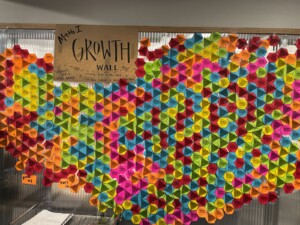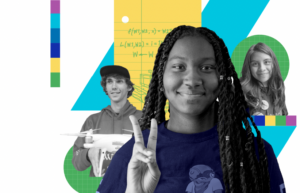2030 and Beyond…Will We Really Be Able to Still Compete?

More than ever, it is critical that U.S. students develop the knowledge, skills, and understanding of global competency that allows them to be competitive, collaborative citizens, and active participants in the economy. Coupled with the fact that students in many countries around the world are outperforming U.S. students in postsecondary educational attainment, on-going changes in labor market needs that have resulted from changes in the globalized economy, there is an increased demand that U.S. students develop global competencies.
For the first time, the 2018 PISA exam includes an assessment on the global competence of students. PREPARING OUR YOUTH FOR AN INCLUSIVE AND SUSTAINABLE WORLD The OECD PISA global competence framework sets out to determine how we are doing in creating globally competent students in response to the United Nations 17 sustainable development goals. The PISA will include a questionnaire that measures students ability to respond to a globally diverse world.
Cultural Competence or Global Competence—Which is Correct?
The term cultural competence has been used for decades to try and get business and education to think differently about the changing world. Yet, the term cultural competence is often limited to understanding another person’s culture but not changing anything about our own practices as a result of this understanding. In response to this concern, several researchers began to use the term global competence instead.
Global Competence is the capacity and disposition to understand and act on issues of global significance” Educating for Global Competence, 2011). Global competency is the development of understanding the world through disciplinary and interdisciplinary study by performing the following four competencies: Investigate the world, Recognize perspectives and Communicate ideas effectively with diverse audiences, and Take action to improve conditions. The globally competent student is aware of the wider world and has a sense of their own role as a world citizen. The student demonstrates competency by consistently respecting and valuing diversity, an on-going commitment to social justice, continuously works with others to make the world a more equitable and sustainable place, and takes responsibility for their actions.
Globally competent teaching requires teachers to translate their personal global competence into professional classroom practice. A globally competent teacher must not only develop global competencies in themselves but also possess the skills to instill global competency in their students. Such skills specific to educators include: to create a classroom environment that values diversity and global engagement, to integrate learning experiences that promote content-aligned explorations of the world, to facilitate international and intercultural conversations and partnerships, and to assess students’ global competence.
Within the traditional classroom, the most seamless way to develop global competence in students is through the use of problem/project-based learning. Problem/Project-based learning (PBL) allows students the opportunities to take learnings and put them into the context of solving a problem or developing a “project” based solution to a current problem. The projects are designed using a formal approach to creating a solution to an existing problem. The Buck Institute describes PBL as the opportunity for students to work on a project from one week to up to a full semester to solve a real-world problem or engage in answering complex questions. There is a process outlined by the Buck Institute that explains the steps in designing a project/problem based learning opportunity. These steps include ensuring it is a challenging based problem, is authentic and allows for student voice and choice in how to attend to the problem.
So, how might this look in an elementary classroom? We often engage in exploring water with students in mid-elementary schools. We have students look at water under a microscope, talk “further about what they see under the microscope. The conversation continues by asking students explore the many uses of water, discuss the health benefits and then ask students to design a system to get water from small creek in a remote village in Africa to the school nearby. This type of authentic learning allows students to explore the region of Africa you assign, explore the culture and climate (when does it rain and why do you do when it doesn’t rain to get water?) and engages them in using technology and the basics of wheels and gears to get water from one place to another. You have now linked more than one unit in science to some learnings in social studies as well. Add in the book “The Water Princess” and you now have a completed problem/project-based learning unit that crosses almost all the subjects!
The middle and high school also offers some wonderful opportunities to expand the global competence of students using problem/project-based learning. In social studies, students, are assigned to be a part of a United Nations Task Force. They are asked to provide the new leaders of a nation that has just overthrown a dictator with good advice on how to create a constitutional democracy. The math teachers always see to be the most forgotten when we talk about problem/project-based learning. Yet, there are resources for them as well. Here is an example for math: This project allows students to apply the geometric principles of triangles, volume, and coordinates to the mapping and design of a multi-purpose arena in a limited area. The arena must serve as a venue that can be easily converted for use by two sports, plus serves as a concert venue if needed. Students will form design teams to create a map showing how the arena can be converted for the two sports. The map will be accompanied by a hand-built model or a digital design using Google SketchUp or other tools. In the final presentations, the map and design ideas will be presented to the local City Council. For those who want to explore more possible PBL projects, there is a searchable database by the Buck Institute with rubrics included!
As educators, we often struggle with where to begin. Below is a recommended plan to begin to develop global competence and to bring it alive in the classroom.
- Examine your own global competence through a free online assessment tool
- Explore the global goals for sustainable development
- Look at the global competency initiatives of states like North Carolina who has developed rubrics to measure global competence in students
- Take free online courses that help you develop your own understanding of global competence
- Design projects and lessons that include a global impact goal
- Continue to grow and evolve in your own global competence and encourage your students to do the same!
For more, see:
- Cultivating Cross-Cultural Competence in Costa Rica
- Educating for Global Competence: 6 Reasons, 7 Competencies, 8 Strategies, 9 Innovations
- Blended Language Learning Boosts Global Competence
Stay in-the-know with innovations in learning by signing up for the weekly Smart Update.. This post includes mentions of a Getting Smart partner. For a full list of partners, affiliate organizations and all other disclosures, please see our Partner page.







0 Comments
Leave a Comment
Your email address will not be published. All fields are required.